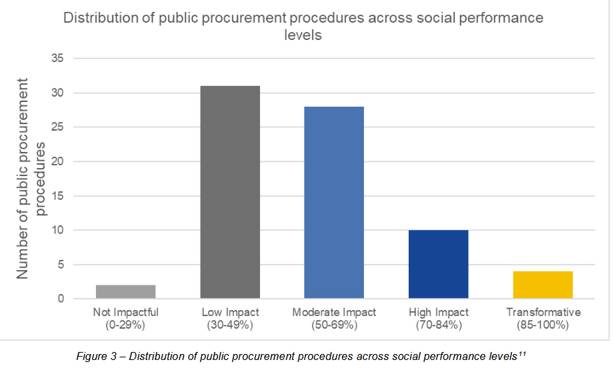Public procurement has the potential to advance social policies and provide transformative societal benefits, such as social inclusion, gender equality and decent working conditions. However it can be a challenge to measure the impact of Socially Responsible Public Procurement (SRPP). To address this, ICLEI Europe and PricewaterhouseCoopers published a report providing an analytical framework to measure the social impact of tender procedures.
The report, developed in the context of the EU-funded Socially Responsible Public Procurement – Lot 2 project, analyses a sample of public procurement procedures across the EU against a set of indicators for measuring social impact in SRPP. Following from its analysis it offers recommendations for how to integrate social considerations in procurement practices in the EU.
The indicators the report works with are ‘Promoting employment opportunities and social inclusion’, ‘Encouraging decent working conditions’, ‘Supporting accessibility and design for all’, and ‘promoting sustainable practices. These indicators were developed through desk research that identified existing practices for monitoring and impact measurement, as well as a workshop with SRPP experts and representatives from different EU member states.
After the establishment of the indicator framework, the project created an assessment matrix designed to standardise evaluation process of public procurement procedures, complemented by a scoring system to quantify how effectively social impact considerations were integrated in tenders. The matrix and scoring system were then used to evaluate 75 public procurements from all EU Member States.
The evaluation revealed that while some tenders integrated social considerations well, many lacked significant social impact. To increase their impact the report offers a number of policy recommendations, including adopting a holistic approach towards SRPP, standardising good practices across the EU, developing strategies to increase high-impact procurement procedures and implementing comprehensive monitoring and reporting mechanisms.
The full report can be downloaded here.




